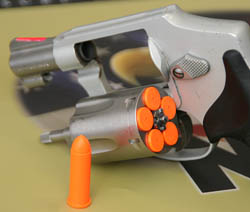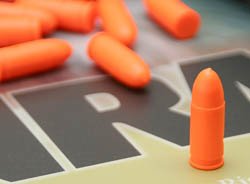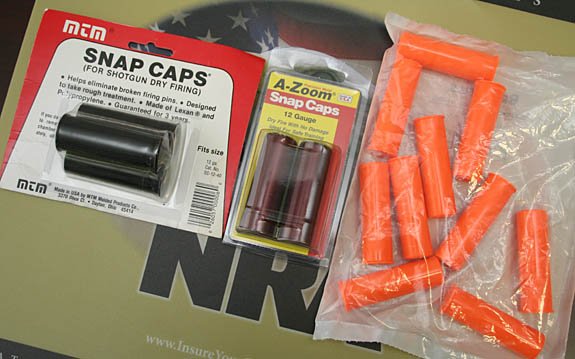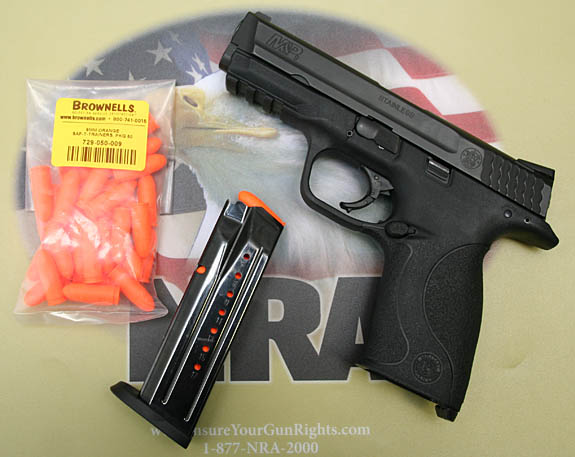
Dry fire practice can save your butt. Seriously.
Spending a few minutes every day working on trigger control and sight alignment through dry firing can translate into huge improvements on the range. Probably the biggest problem anyone has with shooting is trigger control. Learning to master that is probably the biggest thing you can do to become more accurate.
One of the concerns about dry fire practice is the possibility of damaging the firearm. In my own experience, I think the concern is wildly overstated by many people. Having dry fired a number of centerfire weapons thousands of times, I have not seen any problems develop in any of them.
Until recently, I have said the only firearms that can suffer damage from dry firing are some rimfire guns. I do not suggest doing dry fire practice with a rimfire.
Recently, however, I heard an episode of the Gun Dudes podcast, where one of the ‘Dudes’ had to ship his Springfield XD back to the factory because the firing pin was broken during dry firing. I cannot confirm the information as accurate, but even if it is, that is the first case I have heard about directly from the affected party. (‘I knew this guy who had a cousin…’ stories don’t count for me.)
As I have stated before, using snap caps (dummy rounds) can eliminate the potential for gun damage during dry fire. They are relatively inexpensive, and can be had in most major handgun and long arm calibers.
If you are concerned about damaging your gun, pick up some snap caps for your gun. I’ve had experience with four different brands.

Saf-T-Trainer – These are my favorite kind of dummy rounds. The Saf-T-Trainer rounds are plastic rounds colored a bright orange. Not only will they not fire, they also provide a very clear difference from live ammo.
The Saf-T-Trainer rounds can be had in a wide range of calibers. Currently, I have them in .223, 9mm, .38 Special, 12 gauge and 20 gauge. All of them function reliably through my guns.
I bought all of my Saf-T-Trainers through Brownells, but they can be had elsewhere.
MTM Snap Caps – I bought two packages of MTM Snap Caps in 12 gauge. Each package contained three shells. I wanted at least five shells so I could practice loading from the ammo carrier on the buttstock of my Remington 870.
I was not happy with the MTM Snap Caps for a variety of reasons, but probably could have lived with them. However, I found that the mouth on the crimp end was much too wide. The open mouth would sometimes hang on things that a normal shell, or other snap caps, would not.
A-Zoom Snap Caps – I own A-Zoom Snap Caps for the 12 gauge. I like these snap caps, but they are more expensive.
Instead of plastic, the A-Zoom 12-gauge rounds are made of metal with a closed end. This allows the shell to have a more realistic weight and it will not catch on anything a live shell would not.
Like I said, they are more expensive, and instead of a three-pack like the MTM, or a 10-pack like the Saf-T-Trainer, the 12 gauge comes in a two-pack.
Armsport Snap Caps – I own a set of these in .38 Special. Unlike any of the other snap caps listed, the Armsport has a spring that absorbs the impact of the firing pin. I don’t know if that is better for protecting the firing pin, but it certainly seems like it could be.
My complaint about the Armsport snap caps is that the cartridges are not full length. The diameter is correct, so they fit properly in the cylinder, but they are only about 1/2 of the normal length of the .38 cartridge.
For strictly dry firing, these are fine. But, if you plan on incorporating reload drills into your dry fire, they become a liability.
Looking at the non-revolver snap caps, it looks like Armsport makes the other cartridges the correct size for proper cycling in shotguns and semi-autos.
At the end of the day, you have to decide what level of comfort you need for conducting dry fire practice. Personally, I think the value of dry firing far exceeds the possibility of damage to the gun. That said, I have bought snap caps in several of the calibers I own, and will eventually own dummy rounds for all of my firearms.
No sense in inviting problems, no matter how remote, when the snap caps are so cheap.

